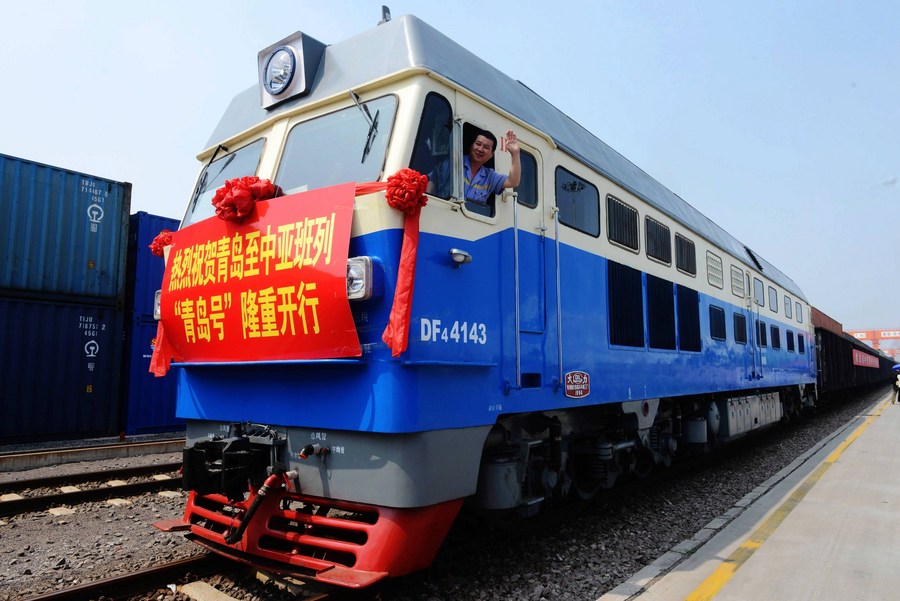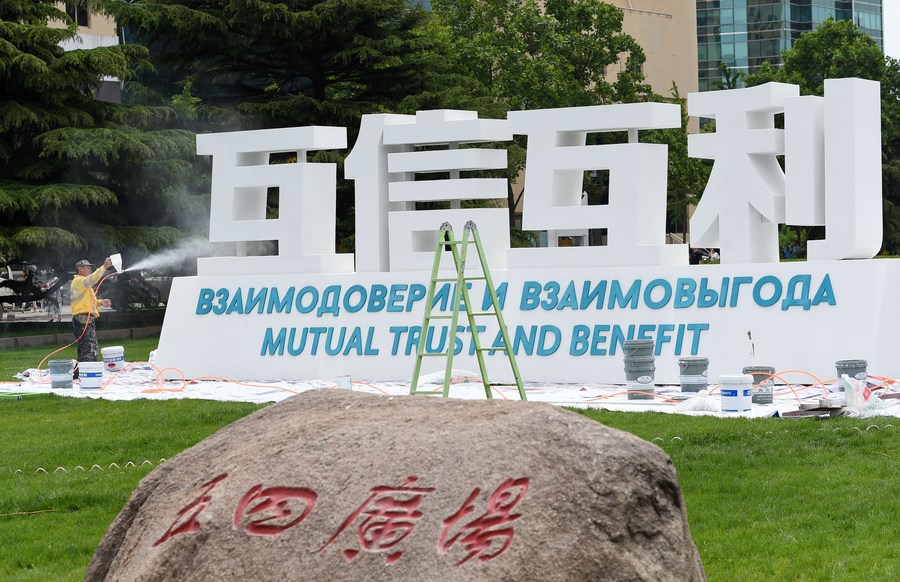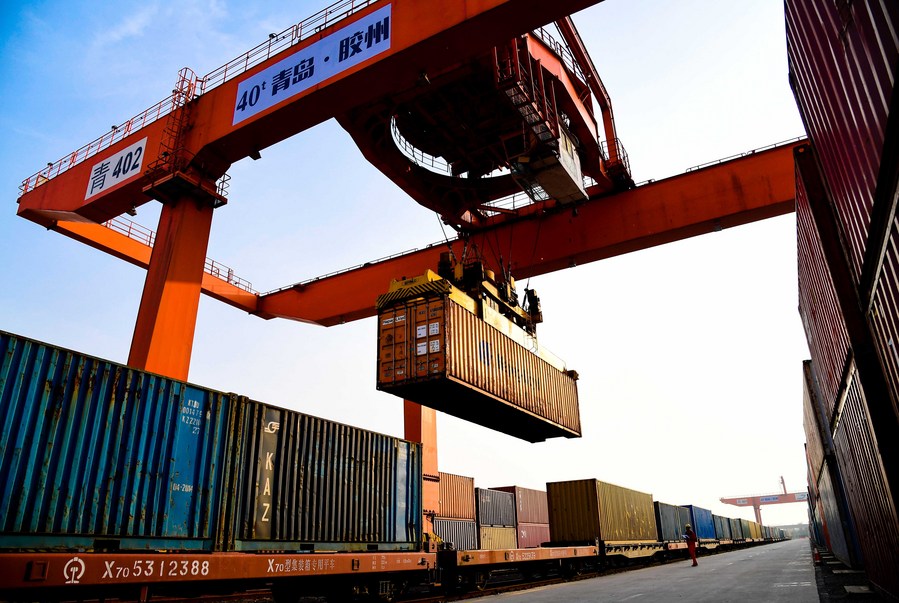Steering SCO cooperation forward in challenging times
A China-Central Asia cargo train carrying tires, auto parts and electronic components left a China-SCO (Shanghai Cooperation Organization) demonstration zone in China's eastern port city of Qingdao Monday morning and is scheduled to arrive in Kazakhstan in 12 days.
A China-Central Asia cargo train carrying tires, auto parts and electronic components left a China-SCO (Shanghai Cooperation Organization) demonstration zone in China's eastern port city of Qingdao Monday morning and is scheduled to arrive in Kazakhstan in 12 days.

The "Qingdao" freight train heading to Central Asia sets off from the central station of CRIntermodal in Qingdao, a port city in east China's Shandong Province, July 1, 2015. The freight train, carrying auto parts, digital products and tyres, transports cargoes to Central Asian countries including Kazakhstan and Uzbekistan. [Photo/Xinhua]
The cargo train service as well as the demonstration zone are part of the tangible legacy of the SCO Qingdao summit in 2018, and have over the past two years contributed to the SCO members' cause to make this regional bloc an even stronger powerhouse in terms of boosting common development, preserving collective security and stepping up exchanges in the region and beyond.
To continue pushing forward the SCO cooperation, leaders of the member countries will convene on Tuesday via video link against the backdrop of a lingering coronavirus pandemic and multiple pressing global uncertainties.

A staff member decorates a sign for the Shanghai Cooperation Organization (SCO) Qingdao Summit in Qingdao, east China's Shandong Province, June 2, 2018. [Photo/Xinhua]
Founded in 2001, the SCO set its primary mission as building mutual trust and boosting collective security, a vision in sharp contrast with the confrontational zero-sum Cold War mentality. The SCO's bedrock principle, the "Shanghai Spirit," featuring mutual trust, mutual benefit, equality, consultation, respect for cultural diversity and the pursuit of common development, has proved to be a banner for building a new type of international relations highlighting mutual respect, fairness and justice, and win-win cooperation in modern times.
After 19 years of growth, the SCO now represents nearly half of the world's population and over 20 percent of global gross domestic product. With a booming influence, it has developed into a constructive force in promoting world peace and development.
Moreover, the organization has shown its unity when the COVID-19 pandemic hit hard on the world earlier this year. The SCO members were able to help each other through this mechanism during the most difficult period of this outbreak. And with border control and other preventive measures, the spread of the virus has been put under control, while industrial as well as supply chains have been put back in order to a considerable extent.

A gantry crane loads cargo onto a freight train bound for Central Asia at the Jiaozhou Bay International Logistics Harbor in Qingdao, east China's Shandong Province, May 7, 2018. [Photo/Xinhua]
Looking into the future, more dynamic cooperation within the SCO framework is urgently needed as daunting challenges still lie ahead.
First, the SCO members need to continue enhancing cooperation in public health governance as a second wave of the COVID-19 pandemic is sweeping across the world. In the fields of information sharing, drug and vaccine development, and bio-security, even stronger joint efforts are their best, and only, option for the sake of the common health of people in the region.
Second, the SCO countries should consolidate their synergy in maintaining regional stability. Over the years, the SCO has attained impressive achievements in combating the "three evil forces" of terrorism, separatism and extremism, as well as in cracking down on cross-border and cyber crimes.
To preserve the security and stability across the region, countries need to further consolidate political mutual trust. They should also support each other on issues involving their respective core interests, and continuously expand security cooperation.
Third, members of the organization need to revitalize trade and investment, as well as to enhance openness and inter-connectivity especially when the global economy is suffering from a massive pandemic-induced contraction.

Photo taken on June 12, 2019 shows the Qingdao multimodal transportation center at a demonstration zone for China-SCO local economic and trade cooperation in Jiaozhou City, east China's Shandong Province. [Photo/Xinhua]
To rejuvenate global growth in the post-pandemic era, the Belt and Road Initiative remains an effective cooperation framework. The aforementioned China-SCO cooperation hub in Qingdao is a good example.
Besides, digitalized technologies, such as e-commerce, artificial intelligence, and online education, that have been widely applied in China's efforts to resume work and production, can also inject new impetus into building the Digital Silk Road across the region as part of the joint Belt and Road construction.
As the SCO leaders are gathering for the online summit, they are facing a special task and a unique opportunity to reach new and broader consensus on strengthening all-around cooperation within the organization.
The past almost two decades have proved the positive role the SCO can play in maintaining regional peace and stability and stimulating growth and development. The world community may justifiably have the confidence to expect steadfast and constructive contribution from the SCO at this critical juncture of the human history.

